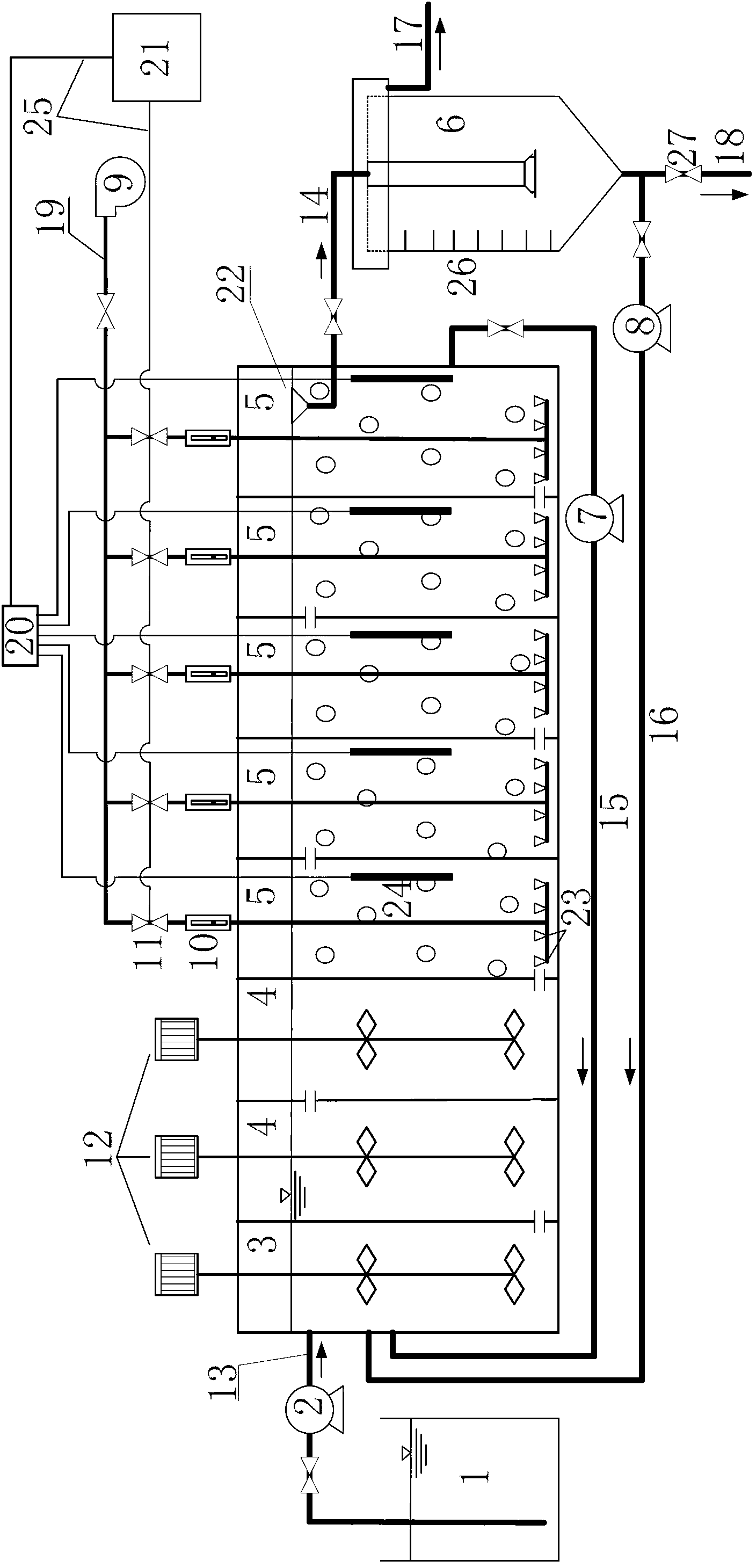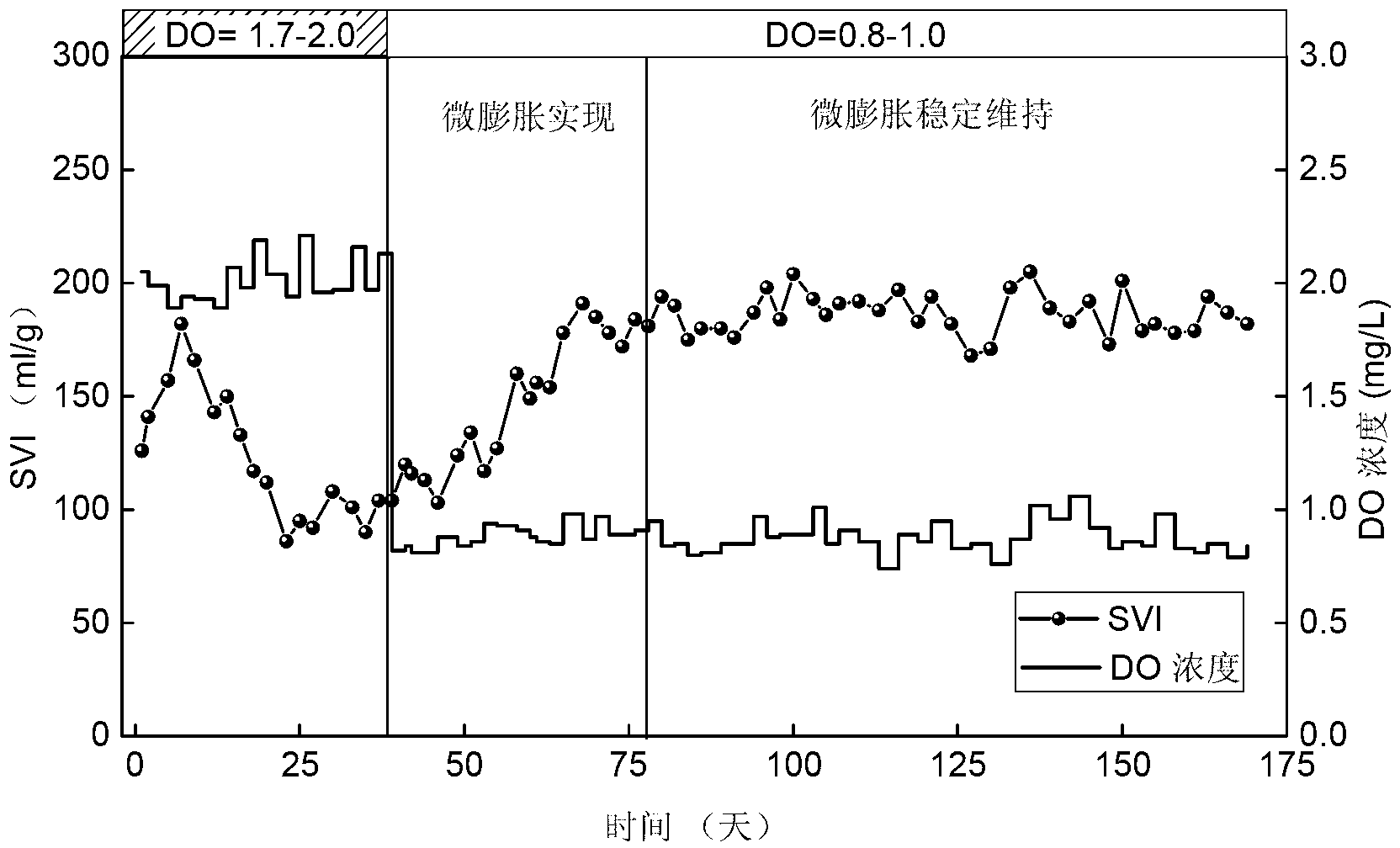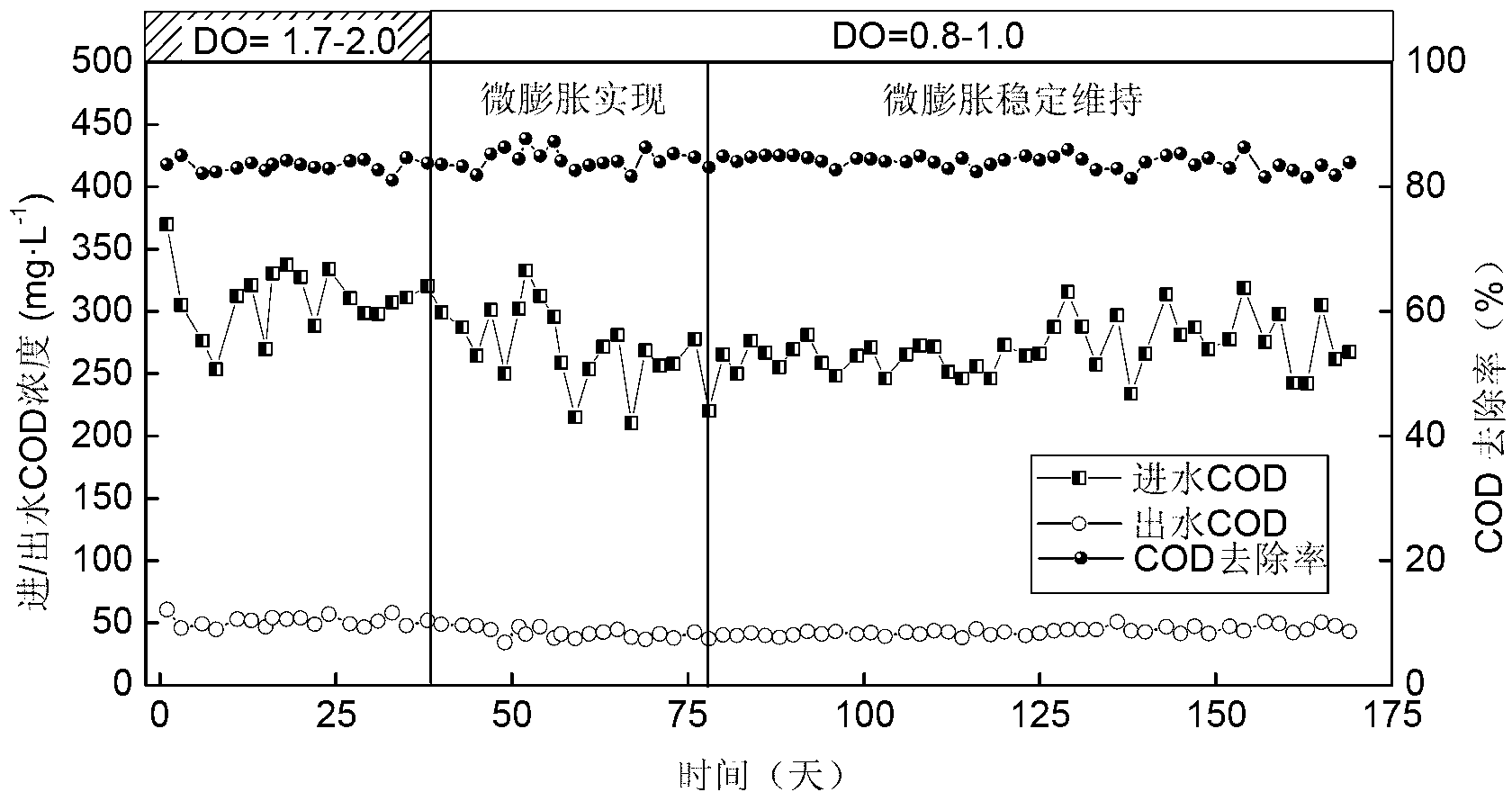Method for starting and stably keeping micro-expansion of sludge in synchronous biological nitrogen and phosphorus removal system
A biological denitrification and micro-expansion technology is applied in the field of biochemical wastewater treatment, which can solve the problems of the length of the secondary sedimentation tank, and achieve the effects of improving the removal rate of organic matter, improving the removal rate of organic matter, and saving energy consumption of aeration and electricity.
- Summary
- Abstract
- Description
- Claims
- Application Information
AI Technical Summary
Problems solved by technology
Method used
Image
Examples
example 1
[0042] The actual domestic sewage of a community next to a university in Beijing was used as the treatment object (COD=210.2-369.6 mg / L, TN=49.71-82.59 mg / L, PO 4 -P =4.4-8.4 mg / L), the treated water volume is Q=198 L / d, the biochemical tank is maintained at SRT=15d, HRT=8h, the internal return ratio and the sludge return ratio are 150% and 100% respectively, and the room temperature is Around 20°C. Experimental results such as figure 2 , 3 , 4, and 5.
[0043] figure 2 The change curve of sludge SVI before and after the realization of micro-expansion shows that maintaining a constant DO can basically ensure that the SVI is maintained at a level of about 200 ml / g. During the stable maintenance for nearly 100 days, no serious deterioration of the settlement performance and effluent quality occurred.
[0044] image 3 , 4 , 5 is micro-expansion before and after the realization of the system for COD, TN and PO 4 -P removal effect. The results show that the realization ...
example 2
[0046] The actual domestic sewage of a community next to a university in Beijing was used as the treatment object (COD=210.2-369.6 mg / L, TN=49.71-82.59 mg / L, PO4 -P =4.4-8.4 mg / L), by manually adding sodium acetate, ammonium chloride or potassium dihydrogen phosphate to change the organic load, nitrogen and phosphorus load of the influent, and investigate the impact of load shock on simultaneous biological denitrification Effect of microswelling stability of phosphorus systems. The treated water volume is Q=198 L / d, the biochemical pool is maintained at SRT=15d, HRT=8h, the internal return ratio and sludge return ratio are 150% and 100% respectively, and the room temperature is about 20°C. The load change adopts the method of regular dosing, and the organic load (or nitrogen and phosphorus load) is increased by 50% at 7:00-9:00 in the morning and 19:00-21:00 in the evening every day, and the water quality is normal at other times. The test results show that the system can cope...
PUM
 Login to View More
Login to View More Abstract
Description
Claims
Application Information
 Login to View More
Login to View More - R&D
- Intellectual Property
- Life Sciences
- Materials
- Tech Scout
- Unparalleled Data Quality
- Higher Quality Content
- 60% Fewer Hallucinations
Browse by: Latest US Patents, China's latest patents, Technical Efficacy Thesaurus, Application Domain, Technology Topic, Popular Technical Reports.
© 2025 PatSnap. All rights reserved.Legal|Privacy policy|Modern Slavery Act Transparency Statement|Sitemap|About US| Contact US: help@patsnap.com



